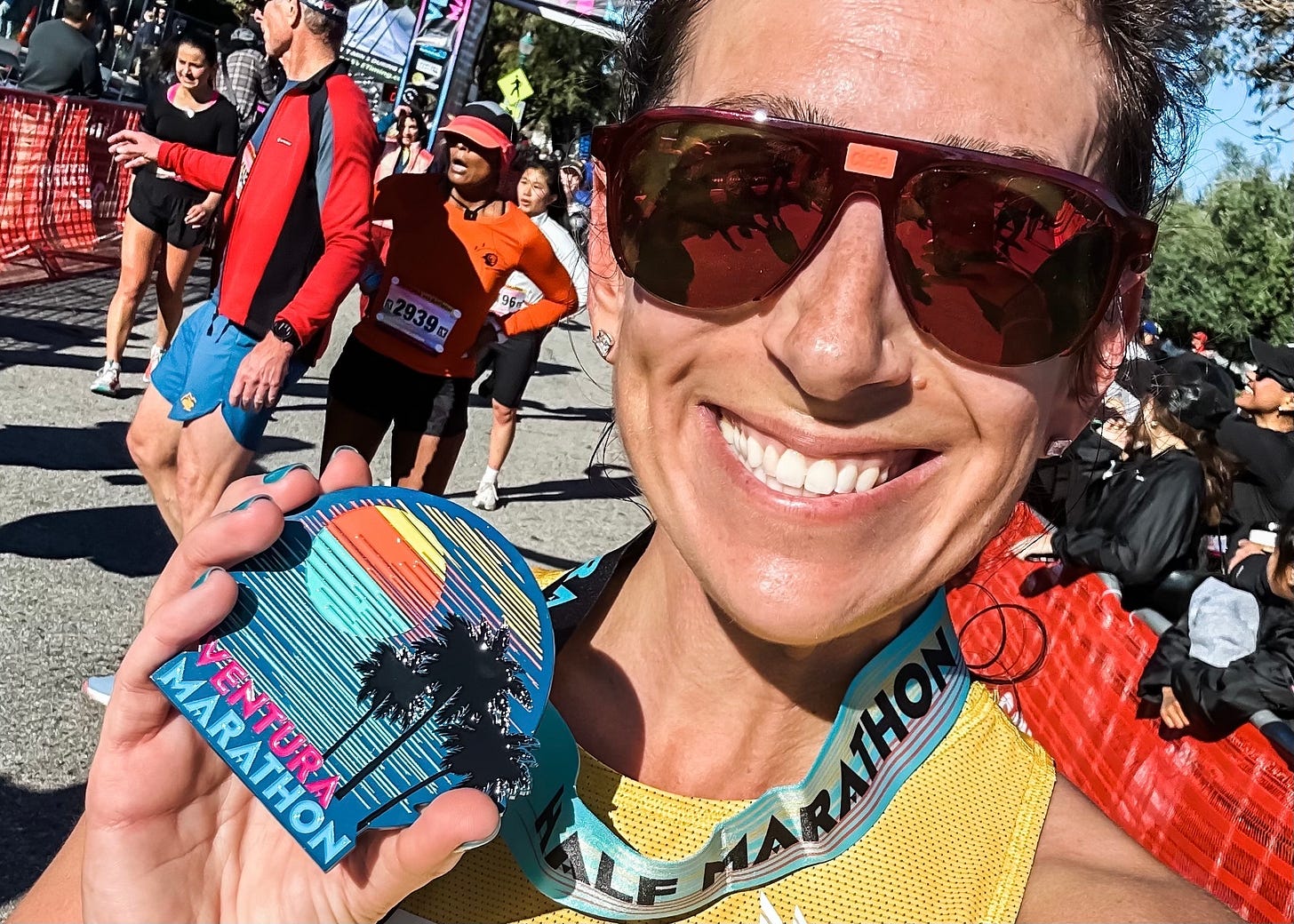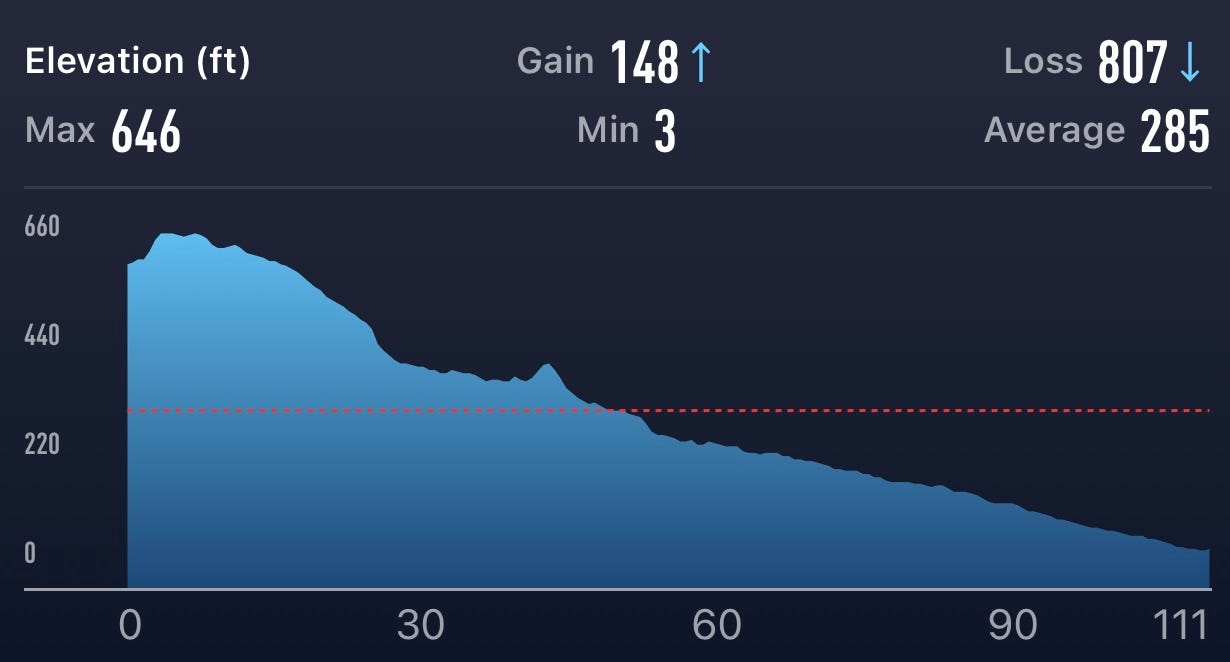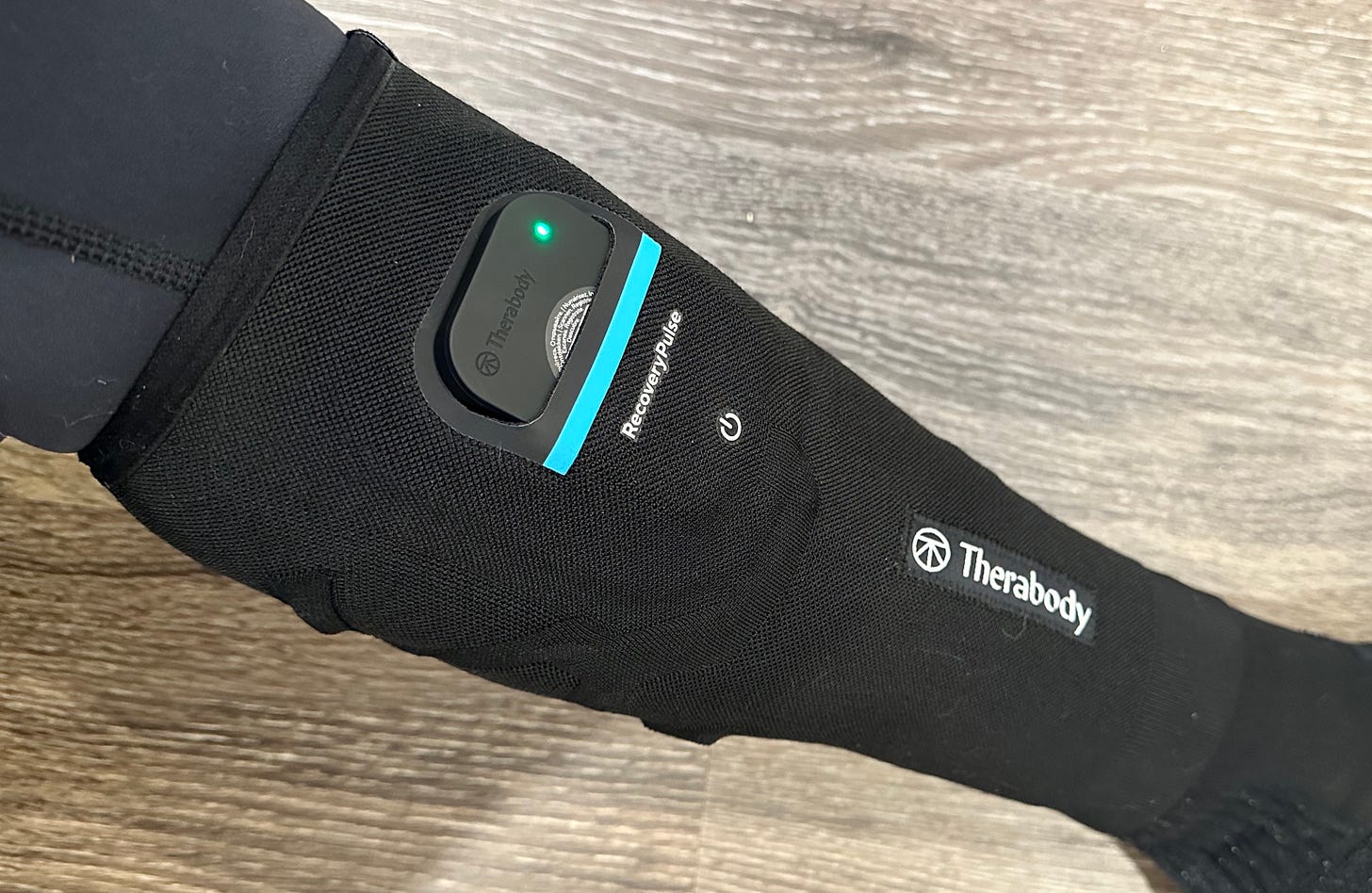Ventura Half Marathon Recap
Just the right amount of downhill for a shakeout race before the Tokyo Marathon!
Last year, a group of my friends signed to run the Ventura Half Marathon on the last Sunday of February, but I decided not to join because I assumed I was going to Tokyo for the marathon the following week. Well, the Tokyo Marathon was cancelled in 2022. This year, given my luck with that marathon (I’ve been registered since 2020), I figured it wouldn’t happen again, so I said screw it and signed up for the Ventura Half. Joke’s on me, because I ended up having to run a half marathon the week before a marathon.
(Obviously, I could have deferred or skipped it, but heading out to LA a few days before I would have left Denver for Japan helped me cut out a layover on an already very long journey and gave me an opportunity to have fun with friends on a weekend when I typically would have dug myself into a hole of pre-race anxiety.)
I usually run 10 miles the weekend before the marathon, but after talking to my coach Matthew Meyer, we decided running three extra miles mostly easy—on a downhill course at sea level versus at home at altitude—wouldn’t be that much more of a stressor, and would give me a chance to practice race-day fueling and a little bit of marathon one last time. Most importantly, it felt like a fun send-off with my friends, which would help me avoid the taper tantrums.
The plan was to run three miles easy (at around 9:00/mile pace), seven miles at slightly uptempo (at 8:30 to 8:45), and three miles at marathon effort (around 7:45 to 8:00). The goal: to remind me to go sloooow at the beginning and force that faster turnover on tired legs at the end.
The Ventura course starts in the mountains in Ojai—there was actually snow on the peaks!!—and has about 282 feet of elevation gain, 70 feet of which is in the first mile, a feature that I actually appreciated because it forced me to take it easy at the beginning. From there, it’s a gradual descent (with around 800 feet of total loss) to the ocean. Fun fact: Tokyo starts with about 100 feet of descent in the first few miles, so this was good practice in holding myself back at the start of a race, even with gravity making it feel effortless.
I of course still ended up running the first few miles a little faster than my prescribed pace, but (minus getting a little spicy at mile 3) it ended up being a perfectly executed progression run with negative splits and sub-goal marathon pace in the final 5K. And it felt so much easier than racing the Rose Bowl Half Marathon just six weeks ago. Even though that was a little faster overall, I finished pretty gassed, thinking there was no way I could have done another 13.1 miles. This weekend? Totally not the case.
Even better: So many of my friends ran personal bests and NYC Marathon time qualifiers, and the excited energy was totally infectious. With such good vibes, I feel like I’m heading into Tokyo in the best possible headspace.
Now, I’m 100 percent focused on recovery (my calves are definitely a little sore), carb-loading (and prioritizing protein), and getting as much sleep as humanly possible. Next stop: Tokyo!
the rundown
Therabody RecoveryPulse Calf
I used to run in calf sleeves regularly, because the compression helped my legs feel less beat up during and after the workout. But instead of just squeezing your legs, Therabody’s new RecoveryPulse Calf sleeves ($149 for one, $249 for a set; therabody.com) combine compression with vibration therapy. I wish the micromotors woven into the fabric were a little more powerful—it was more of a gentle, surface-level buzz to stimulate blood flow versus a deeper massage that addressed sore muscles—but I like how sleek they are (even with a built-in battery sleeve) and I will 100 percent be traveling with these over compression boots. Here’s my full review for CNN Underscored.
Maurten’s Next Magic Ingredient: Baking Soda
Maurten just launched Bicarb System, a new product using sodium bicarbonate, AKA baking soda, according to this Outside article by Alex Hutchinson. This kitchen staple is a base that can counteract the negative effects of lactic acid in your muscles as you workout (you would take it two to three hours before a race). The only problem is that ingesting baking soda—even in the form of a “yogurt-like slurry” courtesy of Maurten—could lead to explosive diarrhea, but if you’re willing to risk that, you could see a one-perfect performance boost. Your choice!
Running As a Form of Escapism May Lead to Dependence
You know how I feel about running as therapy, and a 2023 study in Frontiers of Psychology confirms that using running to escape your stress—a form of “self-suppression”—can lead to negative effects, including exercise dependence. (FWIW, about 25 percent of recreational runners feel dependent on the sport, a number that jumps to 50 percent among marathoners, according to a 1997 study.) After surveying over 200 recreational runners, the study authors found that self-expansive escapism, an activity in which you engage in to promote positive emotions, was associated with a positive sense of well-being, while self-suppressive escapism, an activity in which you engage to prevent, or suppress, troublesome thoughts or emotions, was linked to a poor sense of well-being. TL;DR: Your intention matters. And everyone can benefit from real therapy!
Puma Forever Run Nitro
I got this shoe at The Running Event this year (it’ll be on sale in March) and it’s been a nice easy run option. It’s Puma’s stability option, using a two-piece Nitro midsole that’s softer in the middle and firmer on the outside; a rocker sole and PWR TAPE supports on both sides keep your foot locked in and guide you through the gait cycle. I don’t see it replacing my other go-to easy run shoes (see: the Nike Invincible, the ASICS Novablast)—the brand did say it was aimed more at health enthusiasts than experienced runners—but it’s certainly a comfortable shoe.
Matt Choi on The Drop Podcast
This was kind of a hate-listen for me—in no way related to the Believe In the Run crew, but because I deeply disagree with the decisions Matt Choi has made in promoting himself (see: banditing the Houston Marathon in January). Throughout the podcast, he described himself as a “creator first and runner second,” and despite calling himself a “serious runner,” doubled down on the idea that his decision to bandit Houston was one of beginner ignorance and procrastination. Choi spun his mistake as an opportunity for new runners to learn from (he wants to appeal to “others who don’t know where to start”)—but he showed a continued lack of self-awareness around his impact on the larger running community when having an e-bike follow him on course for video content at the Austin Marathon in February! I’m sure he’s a fun entertainment follow, but if you’re really not sure where to start, I’d suggest following coaches and professional athletes for running advice before turning to someone who’s primary purpose is content creation.









I was wondering if you would listen to that BITR podcast. I kinda hope he goes on the Morning Shakeout bc 1) this was recorded before Austin and he needs to answer for that as well and 2) Mario is a stellar interviewer in terms of asking hard questions with less softballs. Thomas is getting better but he leads his interviewees way too much when there are difficult topics to cover.